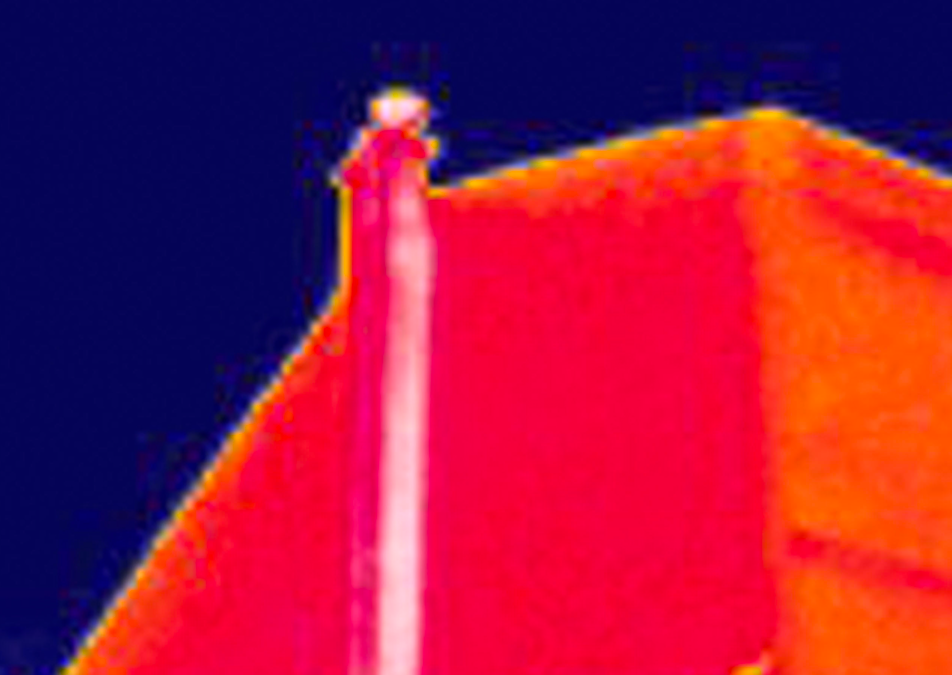A common question among thermographers is, “How much temperature differential is needed to obtain good data?” In this article (a combination of two previously published shorter ones), we discuss required temperature differentials for building inspections.
Proper performance of any infrared (IR) inspection requires that a detectable temperature differential or Delta T to be associated with the sought-after defect at the time of inspection.
For IR inspections of buildings and their subsystems, the appropriate time for the inspection will depend upon, but not be limited to: the type of condition or defect, time of day, local atmospheric conditions, and imaging vantage point.
1. INSPECTING FOR ENERGY LOSS
For building-energy-loss inspections, published standards require an inside/outside temperature differential of 10 C or 18 F degrees for at least three hours prior to the inspection. Such a differential will help to ensure that there is adequate heat flow through structural components necessary for an accurate inspection. While it is possible to conduct energy loss inspections with a lesser inside/outside temperature differential, the likelihood of missing defects increases with a decrease in Delta T.
IR inspections to detect building energy loss may be conducted from either the interior or exterior of a building. However, imaging from the interior is often more comprehensive and useful than macro shots taken exclusively from the exterior. Regardless of vantage point, one must make certain to account for the effects of solar loading, especially when imaging during daytime hours. Thermal patterns associated with missing or damaged insulation may appear warm or cool depending upon vantage point and site conditions.
Lastly, all infrared data should be verified by independent means, as appropriate. This testing may include visual and/or invasive moisture meter readings.
2. INSPECTING FOR MOISTURE
For detecting latent moisture within EIFS (exterior insulation and finish system) structures or insulated roofs, an inside/outside temperature differential is not necessary. For these applications, the IR inspection is traditionally conducted from outdoors during evening hours following a sunny day. Areas of latent moisture will typically show as warm areas since water will store and retain more solar energy than areas containing dry insulation.
For damage investigations, directly imaging wet building materials will usually result in well-defined amorphously shaped patterns. This application does not require an inside/outside temperature differential or solar loading. Rather, thermal patterns associated with moisture can be readily detected provided that water is evaporating at the time of inspection. For drywall, water may evaporate into the living space or into cavities behind the affected drywall. In most cases, water evaporating from a material will cause wet areas to appear cool.
In addition to the above, detecting latent moisture within or evaporating from building materials assumes a relatively high target emittance. Low-emittance surfaces associated with metal building facades or roofs coated with aluminum paint may not lend themselves to an accurate infrared inspection.
As noted above, all infrared data should be verified by independent means, as appropriate. This testing may include visual and/or invasive moisture meter readings.TRR
EDITOR’S NOTE: This material is a combination of two “Tip of the Week” installments from IRINFO.org (Parts 1 and 2, for the weeks of Nov. 11 and Nov. 18, 2019, respectively.)
ABOUT THE AUTHOR
Jim Seffrin, CMRP, has been an Infraspection Institute Certified Infrared Thermographer since 1984. A co-founder of Jersey Infrared Consultants and a practicing thermographer with 35+ years of experience as an infrared consultant, he was appointed Director of Infraspection Institute in April 2000. For information on a wide range of topics related to infrared thermography and associated training and certification, visit IRINFO.org and/or infraspection.com, or email jim@infraspection.com.



